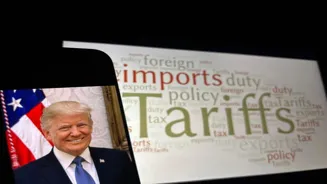Unleash Your Business Potential: Dive into 5 Key Strategies for Entrepreneurs in India! Let's explore essential frameworks for success
In the bustling landscape of Indian entrepreneurship, navigating the market
requires more than just a brilliant idea. A robust business strategy acts as a compass, guiding startups and established businesses alike towards sustainable growth and profitability.
Forget convoluted jargon; we're breaking down five essential frameworks every Indian entrepreneur should know.
These frameworks are your secret weapon, arming you with the knowledge to make informed decisions, adapt to changing market dynamics, and ultimately, build a successful enterprise in the vibrant Indian economy. Get ready to unlock the power of strategic thinking!
Swot Analysis: Analyze strengths, weaknesses, opportunities, threats for business success
The first framework we will explore is the SWOT Analysis. This simple, yet powerful tool helps you analyse your business's internal strengths and weaknesses and also external opportunities and threats. Strengths are your advantages – maybe you have a unique product or a skilled workforce.
Weaknesses are areas for improvement – perhaps your marketing needs a revamp or your supply chain is inefficient. Opportunities are external factors you can leverage – a new government policy favouring your industry, or a growing market segment.
Threats are external factors that could harm your business – increased competition, or changing consumer preferences. By understanding each of these elements, you can develop strategies to capitalize on your strengths, address your weaknesses, exploit opportunities, and mitigate threats.
Applying SWOT religiously is like having a clear roadmap, allowing you to navigate tricky market situations with clarity and confidence. It gives you the upper hand in the competitive Indian business landscape.
Porter's Five Forces strategic model for business growth in India
The second framework is Porter's Five Forces. This powerful model assesses the competitive intensity and attractiveness of an industry.
It examines five key forces: the threat of new entrants, the bargaining power of suppliers, the bargaining power of buyers, the threat of substitute products or services, and the intensity of competitive rivalry.
By understanding these forces, you can identify the areas where you have the most leverage and develop strategies to protect your business from competitive pressures.
For example, if the threat of new entrants is high, you might focus on building strong brand loyalty or creating barriers to entry with patents or exclusive partnerships. If the bargaining power of suppliers is high, you might look for alternative suppliers or negotiate better terms.
This framework helps you position your business strategically within your industry. Adapt this strategy that will give long lasting growth in the Indian business environment.
Ansoff Matrix guides growth strategies with market options for expansion
Third, consider the Ansoff Matrix. This framework focuses on growth strategies, helping you decide how to expand your business.
It presents four options: market penetration (selling more of your existing products in your existing markets), market development (selling your existing products in new markets), product development (introducing new products in your existing markets), and diversification (introducing new products in new markets).
Each option carries different levels of risk and reward. Market penetration is the least risky, while diversification carries the highest risk. For a startup in India, market penetration might involve increasing your advertising spend to attract more customers to your existing product.
Market development could involve expanding your business to other cities or regions in India. Product development might involve launching a new version of your product with additional features. Diversification could involve entering a completely new industry.
This matrix forces you to carefully evaluate your growth options, assess the associated risks, and choose the strategy that best aligns with your capabilities and goals.
Value Chain Analysis optimizes business activities for high returns and sustainability
Moving on, we have the Value Chain Analysis. This framework breaks down your business into a series of activities that create value for your customers.
These activities include inbound logistics (receiving and storing materials), operations (transforming materials into products), outbound logistics (distributing products to customers), marketing and sales (promoting and selling products), and service (providing customer support).
By analysing each activity, you can identify areas where you can improve efficiency, reduce costs, and enhance the value you deliver to customers.
For example, you might find that you can reduce costs by streamlining your supply chain, or you can increase customer satisfaction by offering better customer support. Value Chain Analysis is crucial for optimising your resources that yield high returns.
By analyzing these activities, you will be able to build a business based on sustainability.
Blue Ocean Strategy: creating new markets without competition
Finally, let's look at the Blue Ocean Strategy. In contrast to competing in existing markets (red oceans), this approach focuses on creating new markets (blue oceans) where competition is irrelevant.

It involves identifying unmet customer needs and developing innovative products or services that cater to those needs. This way your business can take you higher and higher. How has this approach been successful? Instead of battling competitors head-on, you create a new space.
This way, you need not worry about competitor that are already existing in the market. For example, an Indian entrepreneur might create a new type of online education platform that caters to the specific needs of rural students, or a new type of eco-friendly packaging material that reduces waste.
Blue Ocean Strategy can require more creativity and innovation than simply competing in existing markets. But, the rewards can be significant in terms of growth and differentiation.
Indian entrepreneurs gain edge with key strategic frameworks, act now
By understanding and applying these five frameworks – SWOT Analysis, Porter's Five Forces, the Ansoff Matrix, Value Chain Analysis, and Blue Ocean Strategy – Indian entrepreneurs can gain a significant competitive advantage.
Remember, strategic thinking is not a one-time exercise but an ongoing process of analysis, planning, and adaptation. Embrace these frameworks, tailor them to your specific business needs, and watch your entrepreneurial vision take flight. So, what are you waiting for?
Start applying these frameworks today and pave your way to success in the dynamic Indian business landscape.












